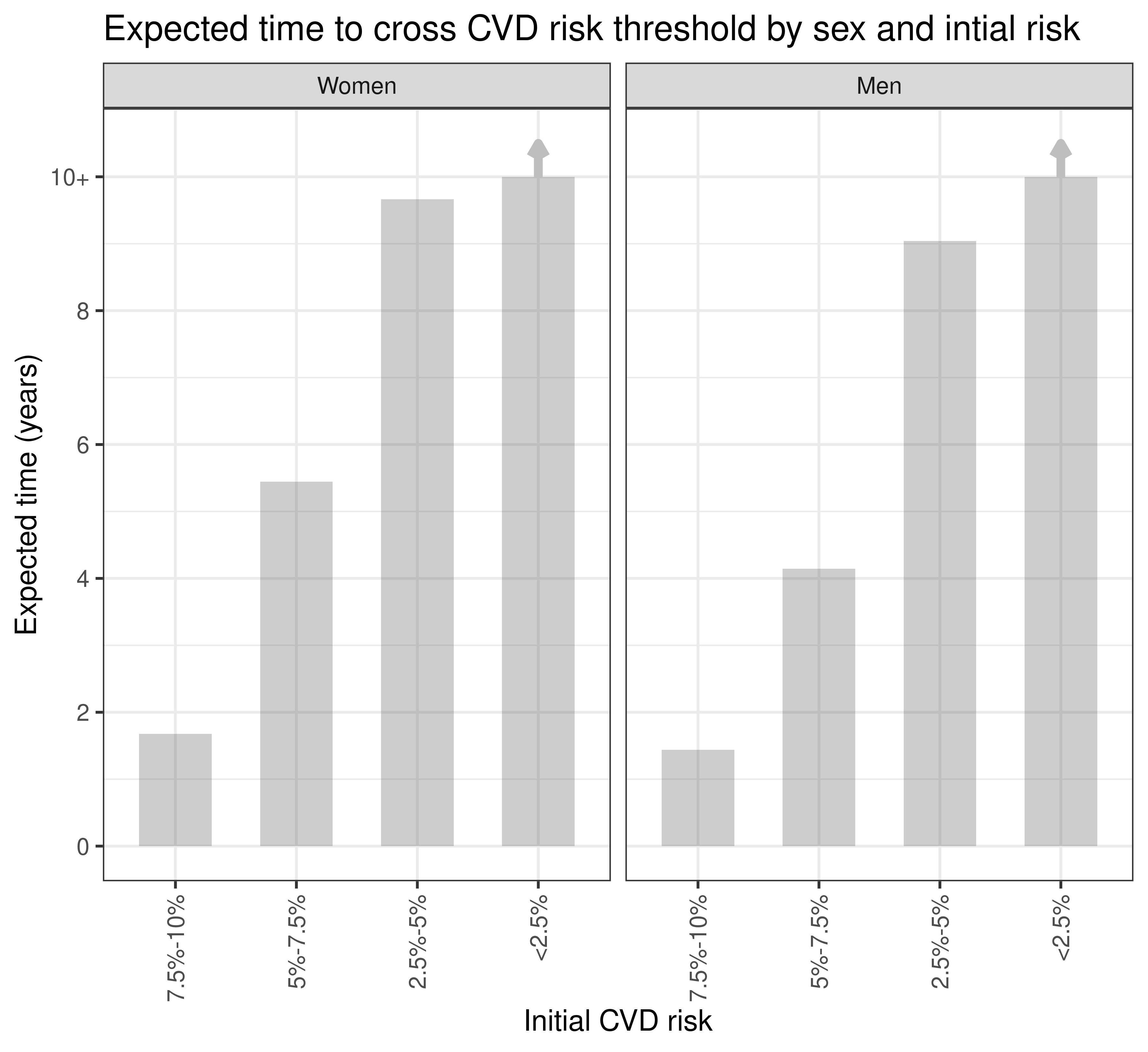
Submitted by A.S. Quenault on Thu, 27/03/2025 - 13:08
New research reveals that cardiovascular risk assessments should be personalised based on initial individual cardiovascular risk, age, and sex, challenging the current one-size-fits-all approach.
Identifying optimal intervals for re-assessing cardiovascular disease (CVD) risk is important for ensuring preventive treatments can be started as early as possible for people at high risk. To date, only two studies published empirical data on the intervals for assessing CVD risk. Both studies concluded that risk assessment intervals should be based on initial estimates of risk. However, sample sizes were small and measurements were only available at a few specified time points, often outside the intervals considered in clinical practice guidelines.
Jessica Barrett and Zander Gu at the MRC Biostatistics Unit (BSU) have led the first large-scale study providing empirical evidence on the optimal times to re-assess cardiovascular disease risk, using UK primary care data from more than 2 million people. The study, published in the British Medical Journal, adds to the previous literature by providing the distributions of the expected time to cross a given CVD risk treatment threshold for sub-populations stratified by sex, age and initial risk level. Based on these expected times, the researchers recommend sex-, risk-specific and age-stratified assessment intervals for the UK context, which outperform the current recommendation of 5-yearly risk reassessment for all individuals. The results are also relevant beyond the UK and provide the methodological framework to derive the optimal assessment intervals that can be readily applied to primary care data from other regions.
This study suggests that guideline recommendations for CVD risk assessment intervals should be stratified based on initial level of risk, age and sex. While more complex to apply than blanket approaches such as 5-yearly risk assessment, stratification by risk, age and sex can reduce the number of risk assessments needed and ensure treatments are targeted as early as possible to those with greatest need. Further research on the implications for costs and health outcomes is needed.
Jessica Barrett, Programme Leader at the MRC Biostatistics Unit and senior author of the paper said: “There is very little published evidence to inform national guidelines on how frequently cardiovascular risk should be assessed. Our large-scale study models cardiovascular trends to predict future disease risk and delivers recommendations for the frequency of risk assessments which are tailored to a person’s age and risk level.”
Zander Gu, Research Associate at the MRC Biostatistics Unit and first author said: “The methodology we proposed for deriving risk assessment intervals in the UK is readily applicable to data from other countries and regions, thus has the potential to improve early detection and prevention of CVD globally.”
Read the full paper at: Optimal risk assessment intervals for primary prevention of cardiovascular disease: a population-based two-stage landmarking study | BMJ Public Health
This research was funded by the Medical Research Council. It was supported by core funding from the: British Heart Foundation, NIHR Cambridge Biomedical Research Centre, Cambridge BHF Centre of Research Excellence, BHF Chair Award and by Health Data Research UK, which is funded by the UK Medical Research Council, Engineering and Physical Sciences Research Council, Economic and Social Research Council, Department of Health and Social Care (England), Chief Scientist Office of the Scottish Government Health and Social Care Directorates, Health and Social Care Research and Development Division (Welsh Government), Public Health Agency (Northern Ireland), British Heart Foundation and Wellcome.
*The views expressed are those of the authors and not necessarily those of the NIHR or the Department of Health and Social Care.


